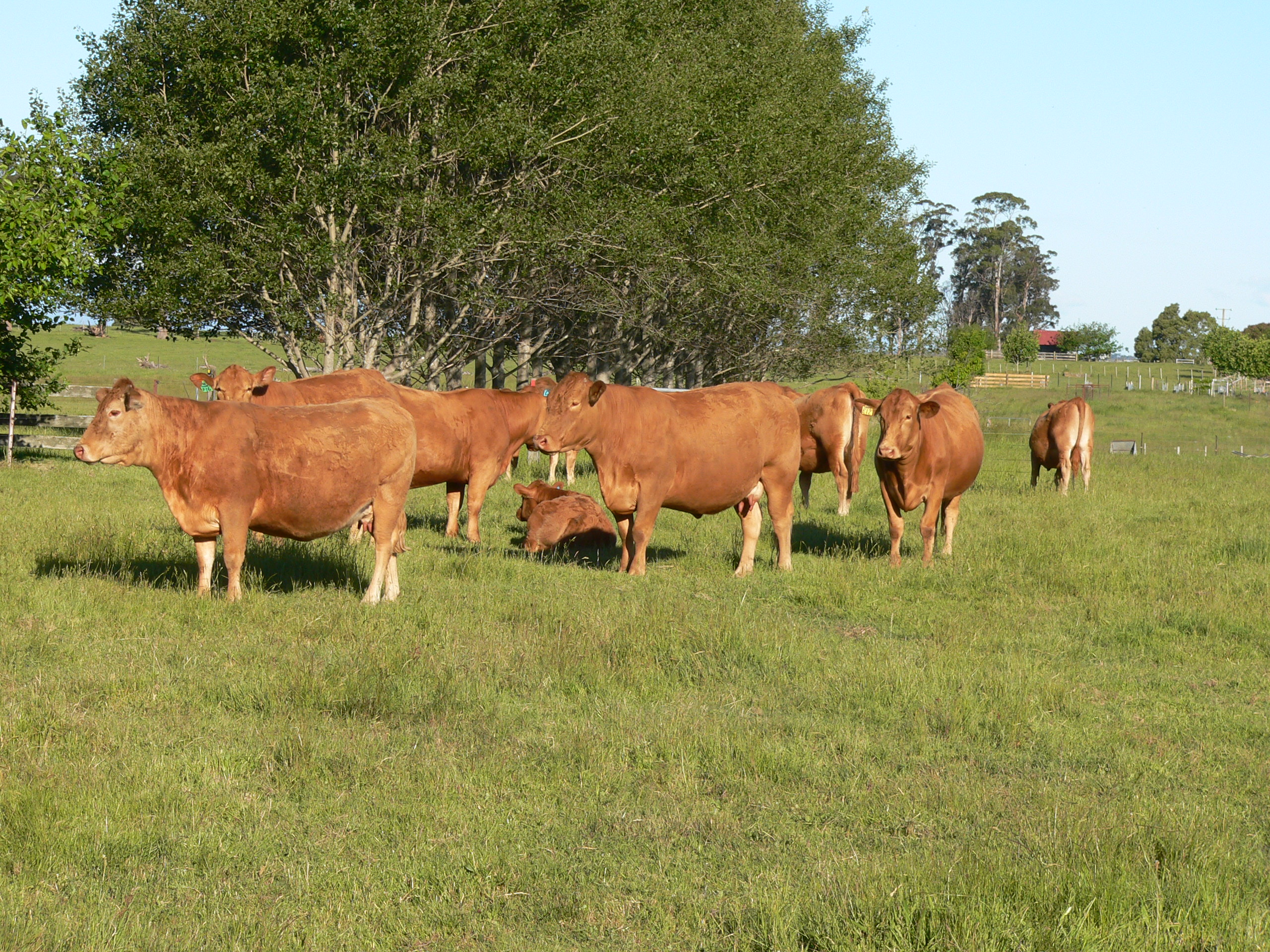The Breed
The South Devon is a British Breed, originating in a very fertile area of South Devon in England, known as the South Hams.
The breed was originally known as the “South Hams” from the late seventeen hundreds until eighteen ninety one (1891), when a breed Society was formed and for reasons unkown the name was changed to South Devon. Since this period the Devon and the South Devon have been very distinctive breeds.

Through the twentieth century until the early seventies, the South Devon was known as a triple purpose breed: milk, butterfat and beef and it was the very high quality milk that the mostly small herds in Devon and Cornwall depended on for their income. It was also about this time that the South Devon was introduced to Australia and New Zealand. Records show that South Devons were shown at the Melbourne show from 1908 to 1920.
The South Devon was originally the largest of the British Breeds. The South Devon is also the quietest. Besides its outstanding growth potential, the South Devon has the ability to put on lean meat without excess fat. As well as being an excellent terminal sire, the mothering ability and ease of calving and early maturity are all great assets of this breed. The South Devon has one unique trait that is very uncommon for most British Breeds that is it is very tick resistant. The South Devon breed is recognized for its placidness; deviation from this characteristic is unacceptable in the breed.
The South Devon is a very “middle of the road” breed, ideally suited to take advantage of various markets especially when used in planned crossing programmes.
Colour and Coat
A fine, sometimes curly, coat of varying shades of golden red colour or black. Sometimes paler on the underline and legs, hide loose and supple.Broken colour is unacceptable.
Head
Somewhat longish head with a broad, clean muzzle, free of discolouration. Horn, if present, fine white or yellow. Eyes- hooded and alert but placid.
Ears-reasonably large and horizontal.
Shoulders
Strong and fine blending smoothly into the body. Long neck, fine in a female but well developed in a mature bull.
Body
Deep and full in the girth, ribs – well sprung with good extension. Deep in the flank giving a good clean underline. Back – long and straight, wide with thick loins.
Hindquarters
Rumps – long and full, wide and square with wide pin bones and a level tail setting. Rounds – deep and wide to the hocks. A strong tail with a good brush.
Legs and Feet
Showing plenty of fine bone, reasonably straight and squarely positioned giving good, easy movement. Fore legs not too wide apart. Feet – medium sized with even claws, neither too long nor down on the pasterns. Structural soundness is paramount.
Bull
Showing strong male characteristics. Testes to be pendulous and large in size. Frame score ideally between 6 and 7.1, with fleshing ability to attain a weight of 1000kgs plus at maturity, with a muscle score of C+ to B.
Cow
Lighter and finer muscled and more wedge shaped than the bulls, but with plenty of volume. Showing a medium sized udder with even, medium sized well placed teats. Frame score ideally between 5 and 7.
CAN YOU AFFORD TO IGNORE VERSATILITY AND PERFORMANCE?
-
Fertility:Unlike many large breeds, South Devons exhibit early puberty, suiting any joining program. Combined with longevity, it is common for 15 year cows to still be producing top calves.
-
Temperament: Known world wide as the gentle breed, South Devons quiet disposition is a real plus, from small holdings to station country. We all appreciate less stress & bruising, to both man and beast!
-
Performance: Outstanding results in carcase competitions and productivity trials have been achieved Australia wide, and overseas.
-
Carcase Quality: Local and International research clearly shows that South Devons have very desirable carcase qualities. The ability to combine British quality with muscle and yield is unique.
-
F1 Females: Hybrid vigor with added frame, muscle and milk, the South Devon F1 is a valuable addition to your herd, and much sought after at the saleyard.
-
Versatility: Progressive commercial cattlemen currently use South Devons to produce vealers to bullocks, in both pure and cross breeding programs. Marketing flexibility is a real plus.
-
Marbling: Local and international results confirm South Devons marble well, allowing access to the lucrative Japanese market.
-
Feed: Whether grain or grass orientated, South Devons feed conversion ability will add profit to your operation.
-
Terminal Sires: Yes, but why waste a great F1 female, you don’t often get muscle and maternal qualities in the one package.
-
Cross Breeds: South Devons are an ideal choice for cross breeders. Their suitability is proven in British, Bos Indicus and European based herdsAustralia wide
